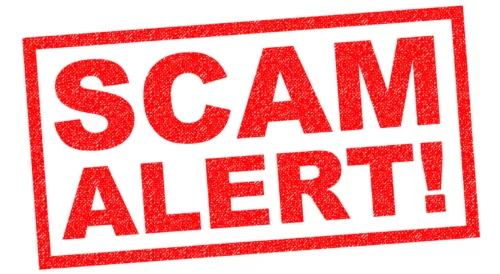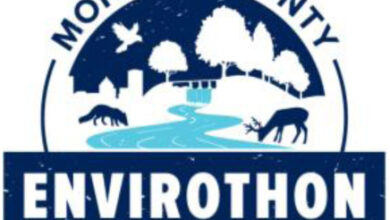Charity scam prevention tips

Charity scams can happen at any time, but they are more prevalent during the holiday season when donors are moved by both generosity and the end-of-year deadline for securing tax deductions.
Charity scams also increase after a natural disaster or emergencies, collecting millions of dollars from unsuspecting donors. On many occasions, these fraudsters pretend to be affiliated with well-known organizations or even the government to scam people out of their hard-earned money. According to the Federal Trade Commission, in 2022, there were 10,217 reports of charitable solicitation fraud resulting in $21 million in losses. This is a drastic increase from 2019’s 3,872 reports of charitable solicitation fraud resulting in $6 million in losses.
Tips to help avoid charity scams:
•Check the legitimacy of the charitable organization. Charities located or engaging in substantial fundraising in New York State should be listed on the New York State Attorney General’s database of registered charities. Research before you donate by visiting https://ag.ny.gov/resources/organizations/charities-nonprofits-fundraisers to verify registration, and by checking websites such as http://www.bbb.org, http://www.give.org and http://www.guidestar.org in addition to visiting the charity’s website. If donating toward relief efforts, visit a site such as http://disasterphilanthropy.org to ensure your donation is really going where it needs to.
•Learn to detect a phony charity. Some scammers will create fake “charities” and try to trick you with names similar to well-known charities. Pay attention to the charity’s full name, web address, contact information, donation policies, etc. Scammers may copy or mimic the name of a familiar, trusted organization to swindle you.
•Designate your donation. Ask how your donation will be allocated between direct services and administrative fees. Unless you designate a specific purpose for your donation, it will go into the organization’s general fund, so make sure to note if you are sending money for a specific purpose (ie: “Playground Fund”).
•Be cautious of third-party fundraisers. If a solicitation comes from a third-party company, the charitable organization will receive only a percentage of your donation. If you want to ensure the charity receives the whole amount, donate directly to the charity instead. For more information, access the New York State Attorney General’s website and review the annual “Pennies for Charity” report.
•Pay attention to vague claims. Be on alert for claims without any clear plan such as “all proceeds go to cancer treatments” or “donations go to veterans who can no longer work.” Instead do some research on the charity before you decide.
•Resist high-pressure tactics. Charity fraud scams can come in many forms, whether by email, social media, crowdfunding platforms, cold calls, etc. Watch out for direct e-mails from “victims” and solicitors who employ heart-wrenching stories, insisting that you donate immediately. It is highly recommended to never provide personal information to unsolicited telemarketers, but instead ask the caller to provide you with the full name of the charitable organization, website address and contact information to research and verify.
•Find out who’s behind the crowdfunding request. Online crowdfunding websites like GoFundMe, Indiegogo and Crowdrise make it easy for people to create crowdfunding campaigns. To protect yourself, remember to only give to people you know directly. It’s also important to understand the crowdfunding site’s rules, policies, and vetting procedures. It can be helpful to know these ahead of time to determine how they are protecting consumers from potential fraud.
•Never disclose personal information. Do not provide any personal information such as your credit card number, Social Security number, or any other personal identifying information in response to an unsolicited charitable request.
•Never give cash. Give your contribution by check or credit card to ensure that you have a record of the donation. Make checks out to the charity, not to an individual. If you choose to make a donation via a charity’s website, check that the website is secure and that your computer is equipped with the latest anti-virus protection. Check for the padlock to the left of the URL search bar to ensure the site is secure. Do not send funds to anyone asking for bitcoin or cryptocurrency as these payments typically have no protections against fraud.
•Don’t mail checks from public collection boxes: According to the US Financial Crimes Enforcement Network (FinCEN), the number of check fraud crimes nationwide has increased since 2020. To avoid this fraud, go directly to the post office to deposit mail. If you need to use a public U.S. Postal Service collection box, try to do so before the last pickup of the day to minimize the amount of time the check spends in the box.
•Double check before you deduct. Donations made to individuals or organizations that are not tax-exempt are not deductible. To find out if a donation will be tax deductible, research an organization’s tax-exempt status at the Internal Revenue Service Tax Exempt Organization Search (https://apps.irs.gov/app/eos/). Request a receipt and track the status of your donation.
The New York State Division of Consumer Protection provides resources and education materials to consumers on product safety, as well as voluntary mediation services between consumers and businesses. The Consumer Assistance Helpline 1-800-697-1220 is available Monday to Friday from 8:30 a.m. to 4:30 p.m., excluding state holidays, and consumer complaints can be filed at any time at http://www.dos.ny.gov/consumer-protection.
Provided information




